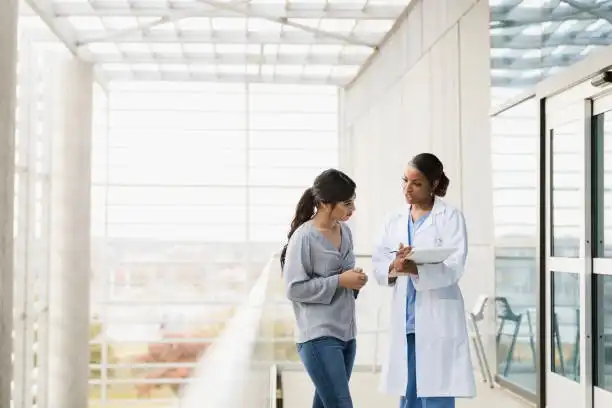Sometimes called “milk spots” or “oil seeds,” these pearly white or yellowish cysts often appear in clusters and may be on large areas of the face.
Eyelid Bump
Eyelid bumps come in many forms, including styes, chalazia, xanthelasma, and milia. They might be white, red, or yellow. They don’t usually cause problems, but some can be a sign of a more serious problem.
Types of Eyelid Bumps
Here’s how to tell what kind of eyelid bump you have.
- A stye looks like a pimple or a blister, usually along the outer rim of your eyelid. It’s red and painful to the touch.
- A chalazion (or chalazia, if there’s more than one) will often grow on the underside of your eyelid, behind your eyelashes, or midway up your eyelid. These are more likely to form on your upper eyelid. A chalazion can look like a stye but may grow larger, up to the size of a pea. It’s also more likely to come back.
- Xanthelasma are soft yellow collections of plaque under your skin, usually near your nose.
- A milium (the plural form is milia) is a tiny white cyst. It’s common in children. Milia are also called oil seeds and milk spots.
Eyelid Bump Symptoms
Common symptoms of eyelid bumps include:
- Swelling
- Tenderness
- Redness
- Irritation
- Blurry vision (with large chalazia)
Eyelid Bump Causes
A stye usually stems from an infection in an eyelid oil gland or eyelash follicle. Stress and hormonal changes can also cause it.
A chalazion happens when a tiny part of your eyelid called a meibomian gland becomes blocked. You can also get it from a stye that is no longer infected but has left hardened material stuck in a gland.
Blepharitis, a condition that causes your eyelids to become inflamed, often is linked to styes and chalazia. So is rosacea, a skin condition. Skin cancer also can cause styes and chalazia, though this is rare.
Xanthelasma can be a sign of cholesterol problems. They’re common in people who have a liver disorder called primary biliary cirrhosis. They may also happen in people who have skin conditions such as erythroderma, dermatosis, and contact dermatitis.
Milia happen when dead cells get trapped under your skin. Skin damage can also cause secondary or traumatic milia.
Eyelid Bump Treatment
Styes and chalazia usually clear up on their own in a few weeks, but there are ways you can move the process along:
- Never poke, squeeze, or try to pop a stye or a chalazion. This could cause a more serious problem.
- Put a warm, damp cloth on your eye several times a day.
- Massage the swollen area gently to help drain the clogged gland. Remember: gently.
- Once the bump drains, keep the area clean and keep your hands away from your eyes.
- Go without eye makeup or contact lenses until the eyelid has healed. (Your contacts may hold bacteria that caused the infection).
- Clean and disinfect your lenses before using them again, along with any accessories you’ve used.
Milia usually go away on their own. You shouldn’t try to pop or remove them, either. Use exfoliating treatments like salicylic acid to help get rid of dead cells.
If you have xanthelasma, your doctor should check your cholesterol levels. They might work with you on dietary changes and give you a medication such as a statin. This may help shrink the xanthelasma, but they won’t go away on their own. Your doctor can remove them by freezing or cutting them, or by using a laser or a chemical.
When to See Your Doctor
If you have a large, painful stye or chalazion that doesn’t go away, see an eye doctor. They may prescribe an antibiotic to help clear it up.
In severe cases, your doctor can drain the bump and give you antibiotics or a steroid injection to help it heal.
If the bump is an unusual color or seems to be changing color or shape, see your doctor right away.
If you have a lot of milia or if you’re worried about how they look, your doctor can remove them. Talk to your pediatrician if your baby has milia that don’t go away within 3 months.
Eyelid Bump Outlook
If you get a lot of styes because of blepharitis, your doctor might give you an antibiotic-steroid ointment. They’ll need to watch closely for side effects of long-term steroid use.
Some people are more likely to have chalazia that come back. Your doctor may want to take a sample from the area for a biopsy to rule out other problems.
Xanthelasma come back in up to 40% of people who have them surgically removed. That number is higher in people who’ve had more than one removal.
Trying to scrape off milia might cause scarring. Secondary milia can be permanent.
Eyelid Bump Prevention
There are things you can do to lower your odds of getting a stye or chalazion:
- Take off eye makeup before you go to bed.
- Disinfect your contact lenses.
- Wash your hands before putting in your contacts or touching your eyes.
The best way to prevent xanthelasma may be to treat the other health conditions linked to them.
There’s no one way to keep from getting milia. You might make them less likely by protecting your skin from the sun, avoiding heavy creams, and exfoliating to get rid of dead cells.
Show Sources
Cheng, K. Cochrane Library, published online April 19, 2014.
Mayo Clinic: “Sty.”
American Optometric Association: “Chalazion.”
Harvard Health Publishing: “Ask the doctor: What can I do about xanthelasma on my eyelids?”
Cleveland Clinic: “Milia.”
American Academy of Ophthalmology: “Stye and Chalazia.”
StatPearls: “Xanthelasma Palpebrarum.”
Cleveland Clinic Health Essentials: “Does Your Skin Have Tiny White Bumps? Leave Them Alone.”
UpToDate: “Eyelid lesions.”
Michigan Medicine/Kellogg Eye Center: “Chalazion and Stye.”
Medscape: “What is the prognosis of xanthelasma?”
Milia: How to get rid of white eyelid bumps
Milia are tiny bumps that occur under the outer skin layer of the eyelid, around the eyes and nose, and on the chin or cheeks.
Sometimes called “milk spots” or “oil seeds,” these pearly white or yellowish cysts often appear in clusters and may be on large areas of the face.
Milia occur most commonly in babies. In fact, they are found in nearly half of full-term newborns. However, teens and adults also can be affected by milia.
What causes milia?
Milia develop when dead skin cells or keratin (a protein found in skin and hair) get trapped under the surface of the skin, forming a raised bump that looks similar to a small white pimple.
Why this happens is not fully understood, but it is not the same as acne, which is usually triggered by hormones and, unlike milia, causes inflammation.
Sun damage can be a contributing factor for milia because it makes skin rough and leathery, so it’s more difficult for dead cells to rise to the skin’s surface and shed normally.
Milia also are associated with other kinds of skin damage — from an injury, medication or illness. These less common forms are called secondary milia.
Sometimes, milia will eventually disappear without treatment; but they also can become persistent and stick around unless steps are taken to remove them.
How to get rid of milia
Milia are not painful, do not cause scarring and often go away by themselves. For these reasons, no treatment is required in many cases.
Milia occurring in newborns (neonatal milia) typically resolve on their own within a few weeks. Primary milia affecting older children and adults can either disappear within a few weeks or months, or they can persist longer.
Adults who find persistent milia bothersome or unsightly often seek treatment to make milia go away.
Milia occurring under the eyes can be especially unlikely to resolve spontaneously. To remove these surgically, see a dermatologist or an ophthalmologist who specialises in cosmetic eye surgery (including milia treatment). Stitches are not needed when milia are surgically removed.
Other strategies that may be used for milia treatment include chemical peels, laser ablation, cryotherapy (freezing) and diathermy (heat therapy).
Milia occurring on the face (for example, on the cheeks, chin or alongside the nose) often can be safely removed at home using a sterilised needle, lancet or comedone extractor.
Comedones (plural of comedo) are plugged, often infected oil glands — also called blackheads and whiteheads — that are the primary signs of acne.
A comedone extractor is a hand-held, pencil-shaped skin care tool that often has a sharp lancet on one end and a rounded extractor on the other end to treat acne lesions and milia.
Care should be taken to clean and disinfect a comedone extractor with isopropyl alcohol before use for milia treatment to prevent infection.
And though it may be safe and effective to get rid of facial milia with a comedone extractor, do not attempt to remove milia from your eyelids or near your eyes. Treatment of milia near the eyes should be performed only by an optician.
Page published on Wednesday, 26 June 2019
Find an optician near you






